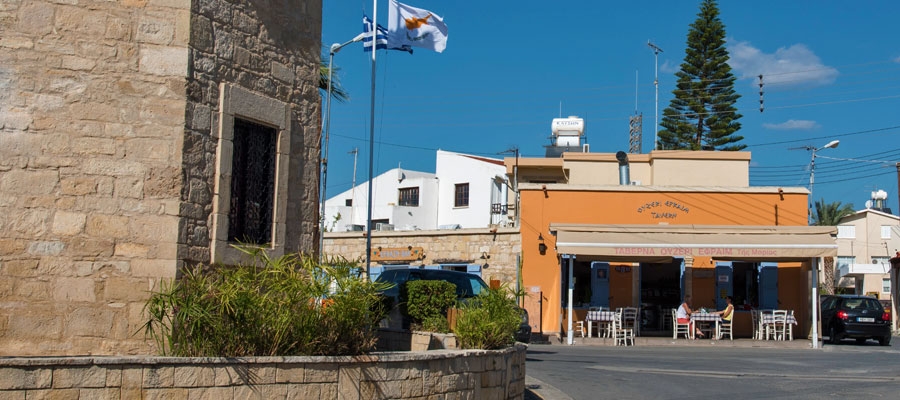Located in the Pafos (Paphos) region, the village of Kouklia is built at an altitude of 85 metres above sea level. Just 16 km away from the town of Pafos, Kouklia can be reached by turning into the F616 route either from the B06 or from the A06 route; the central highway of Lemesos (Limassol) - Pafos.
The village sits on the site where the ancient kingdom of Palaipafos (old Pafos) once stood. Palaipafos was one of the most celebrated pilgrimage centres of the ancient Greek world; the Sanctuary of Pafia Aphrodite. Excavations at the village have unearthed the famous Sanctuary of Pafia Aphrodite, ruins of the fortifications of Palaipafos, the barrow cemetery, and many tombs. Several ancient findings of the region are kept in the local village museum.
Not far from the village, the imposing rock known as ‘Petra tou Romiou’ or Aphrodite’s Rock juts out from the sea and marks the spot where - according to legend - the Ancient Greek Goddess of Love and Beauty was born out of the foam.
Kouklia’s importance was also marked during the Middle Ages as the Lusignans founded and operated a sugar production centre in the area. As one of just three Medieval sugar cane mills on the island, the site at Kouklia is of the most important, as it is one of the few in the Mediterranean - and in the Near East - that has retained all its important functional elements, thus allowing researchers and archaeologists to study the surviving structure in depth, and gain an understanding on how Levantine cane sugar refineries worked.
Amongst its churches, the most important are the ones dedicated to Panagia (Virgin Mary) Hodegetria and to the Apostle and Evangelist Luke. The former is a cruciform-type church of the 13th century with wall-paintings dating back to the 15th century. The latter is the main church of the village, and is especially worth visiting on October 17, when a large religious fair is held annually in honour of the saint.
The name of the village is believed to originate from the word ‘kouvouklio’ meaning ‘cubicle’ from the Byzantine officials who guarded the emperor’s chambers, and aside from its ancient monuments, it is picturesque and leafy, growing various fruits and other crops.

